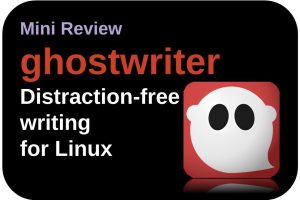We all know WhatsApp. This year the limit of 1.5 billion daily users was exceeded, but that doesn’t mean it is the only good communication app available. One of the available alternatives is Telegram and I really like it. And while there is for us Linux users no native WhatsApp application available for the Linux desktop (although there is an outstanding non-proprietary solution available), for Telegram there is a native companion available for Linux and it is very good and a joy to use. It is fast, secure and reliable and is perfectly in sync with your mobile phone, or what device whatsoever. If you already like Telegram you should be happy to hear that there is a new release available for you to download right now. So let’s check out what’s in this new release of Telegram and what it means for the Linux desktop version.
What is Telegram
For those who do not know Telegram yet it is probably a good idea to have a generic look at this messaging platform first, before we look at the scope of this new release. Telegram is, like WhatsApp, a messaging application, with a lot of similarities, but with quite some differences too. Telegram was launched in 2013 by the Russian brothers Pavel and Nikolai, the founders of Russian VK, which is Russia’s largest social network. But the Telegram team had to leave Russia due to local IT regulations and are currently located in Dubai.
Telegram is free, without ads and subscription fees. Although not quite close to the 1.5 billion daily users of WhatsApp, the 200 million users of Telegram can’t be ignored as well. Telegram is a cloud based solution, and is very flexible and feature rich. It enables you to include image files, video files and stuff like mp3 and docs in a message up to an unbelievable 1.5 GB. Within Telegram it is possible to create groups with, according to the Telegram website, a maximum of a mind boggling 100.000 group members, so complete communities are covered. Telegram offers an open sticker platform so very unique images can be shared with your communication partner. Telegram offers cloud support and cache management options which leads to almost no storage requirements on your device.
Telegram is more flexible with respect to editing messages after they have been sent. Up to 48 hours after sending a message it is possible to edit it or delete it. And when we look at the desktop companion of Telegram an important advantage is that you don’t need your phone nearby to use the desktop app. But the most important selling point for Telegram compared to WhatsApp is security, is probably the way security and privacy is handled.
About privacy and security
Already mentioned was the privacy and security aspect being the central point of interest of the Telegram designers and developers. Telegram uses 256-bit symmetric AES encryption, 2048-bit RSA encryption, and Diffie–Hellman secure key exchange. All data is stored heavily encrypted and the encryption keys are stored in several separate data centers in different physical locations. Both their own engineers and malicious externals cannot get access to user data. Secret chats as a core functionality use end-to-end encryption. This means that all data is encrypted with a key that only the sender and the recipient know. Further you can use the device specific secret chats with self-destructing timed option for messages, photos, and videos. And you can lock your app with an additional passcode. When you send photos, videos or files via secret chats, before being uploaded, each item is encrypted with a separate key, not known by the server. This key and the location of the file are then encrypted again and sent to your recipient. They can then download and decipher the file.
What is new in Telegram
On August 27 the Telegram team shared with the public the news of a new release, in which some nice features have been included.
- It is possible to export your messages to your local disk in a simple way, including all components that the message contains, like photos and sound. It is possible to export individual messages as well. The flexibility in export choices is very extensive, like different chat export settings (personal, bot, group, private channels, public channels), media export settings (photos, videos voice messages, stickers, files) and additional settings.
- Telegram already gave its users a lot of flexibility in how their message notifications work, but in this release it has been taken even further by adding exceptions to the notifications settings, so you can see which chats are excluded from the global settings you defined in your settings. If you don’t want to be notified by all your contact during work hours you can temporarily suppress some of them.
- Telegram already offered a tool to log into third-party apps that require real-life identity, which is called Passport. But now it supports names in original languages and additional types of documents.
- The algorithms in Telegram that encrypt Passport data even better protect against hacking attacks.
- In the settings menu an Automatic Update option has been added.
Not really a new item in this release, but something I missed in a previous release, is the night mode. I love dark themes, so this option, which I not only use in the evening, makes me very happy.
How to install telegram in Linux
Installing the new version of Telegram in debian based Linux distributions is easy:
- Go to https://desktop.telegram.org/
- Click on Get Telegram for Linux 64 bit.
- Go to your Downloads folder.
- Double click the tsetup.1.3.14.tar.xz file.
- Unzip the files in your preferred folder.
- Double click the Telegram file in your preferred folder to start the application.
Have fun!
Note: Parts of the above text are extracted from the privacy page of Telegram. (https://telegram.org/privacy).




